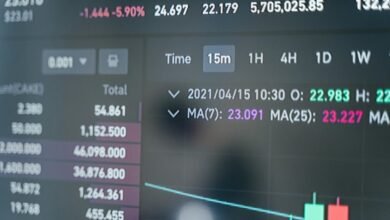
211147978 Call Breakdown: Tracing Mobile Call Origins
The 211147978 call exemplifies the complexities of tracing mobile call origins within the telecommunications infrastructure. Analyzing this number reveals common patterns associated with unknown calls, prompting a deeper investigation into the motivations behind them. Understanding these dynamics is crucial for users aiming to discern legitimate communications from potential scams. As the prevalence of unsolicited calls rises, the strategies for handling and protecting against such disturbances become increasingly relevant. What factors contribute to the legitimacy of a call?
Understanding the 211147978 Number
The number 211147978 serves as a case study for understanding the complexities involved in mobile call tracing.
Through number identification techniques, analysts can ascertain the originating source of calls, enhancing call tracking methodologies.
This process reveals the intricate web of telecommunications infrastructure, allowing users to discern call legitimacy while asserting their autonomy in managing communications, thus fostering a greater sense of freedom in mobile connectivity.
Common Reasons for Receiving Unknown Calls
Receiving calls from unknown numbers can often lead to confusion and concern among mobile users.
Common reasons for these calls include unwanted telemarketing efforts, which exploit consumer data for profit, and robocall tactics that automate mass dialing.
These methods target individuals regardless of their preferences, infringing on personal freedom while contributing to the pervasive annoyance of unsolicited communications in the digital age.
How to Handle Suspicious Calls
When confronted with suspicious calls, individuals must adopt a systematic approach to discern their legitimacy.
Implementing call screening techniques can effectively filter unwanted communications. If a call exhibits red flags, such as requests for personal information or urgent threats, it is vital to avoid engagement and report scams to the appropriate authorities.
This proactive stance fosters a safer communication environment.
Protecting Yourself From Phone Scams
A significant number of individuals fall victim to phone scams each year, highlighting the need for effective protective measures.
Implementing scam detection technologies and utilizing caller verification processes can significantly reduce susceptibility. Consumers should remain vigilant, questioning unsolicited calls and researching unfamiliar numbers.
Conclusion
In conclusion, the 211147978 call exemplifies the intricate nature of mobile communications, revealing both the potential for legitimate connections and the lurking threat of scams. As individuals enhance their call tracing skills, they stand at a crossroads: the ability to discern genuine outreach from deceitful tactics. Yet, with evolving technologies, the question remains—how equipped are we to face the next wave of unsolicited calls? The answer could determine not just the safety of personal communications, but the future of trust in telecommunications.




